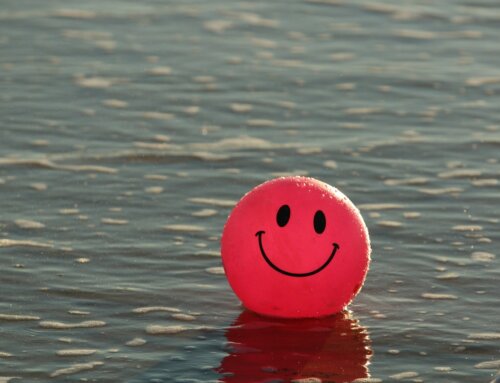
The Eden Center values offering different perspectives on how we can connect spiritually with the practice of mivkeh, and are pleased to share the following piece with our community. A version of this blog was originally published in The Jewish Press.
Why Water?
In Judaism, water is often associated with the mitzvah of mikvah, the requirement to immerse oneself in a natural water bath in order to cleanse oneself of spiritual impurity. What is the meaning behind this strange ritual? Washing oneself with water removes physical filth, but how does it affect one’s spiritual state?
In a related manner, a central question in the story of the mabul (flood) is why Hashem specifically chose to destroy the world through a flood. Hashem could have chosen any form of destruction, and yet, He chose water. Why?
In order to understand both the mabul (flood) and the unique power of mikvah, we must first understand the spiritual concept of water.
The Spiritual Concept of Water
The Maharal (Gevuros Hashem, chap. 19) explains that the fundamental nature of water lies in the fact that it is formless. Water has no independent form; it adopts the shape of its container. The ocean is completely formless, and unlike dry land, it has no pathways or landmarks. This attribute of water reflects its essence. Water represents the initial stage in every creative process. Before something takes form and becomes expressed, it exists in a formless, amorphous state. Through the creative process, physical form emerges from this intangible, formless root. This is why the Torah states that during the creation of the world, there was initially only water. Only afterwards did dry land emerge from the water (Bereishis 1:9).
Destroying or Recreating?
This is the deep secret behind the mabul: Hashem was not destroying the world, He was recreating it. The Dor Ha’mabul (Generation of the Flood) became so corrupted that Hashem decided to start over with Noach alone. Hashem therefore immersed the world in water so that it could return to its primordial state of formlessness and void. Only once it reverted to its original state could the dry land once again emerge from the waters, recreated and reformed. And only once the dry land emerged, and the world was birthed once more, could Noach leave the teivah (ark).
Personal Creation
This deep nature and purpose of water explains why we are surrounded by amniotic fluids while in the womb. Just as during creation, the physical world of form emerged from formless water, each of us has our own creation story, and therefore we each emerge from our own waters; our birth is like the birth of a new world (Sanhedrin 37a).
The Gemara explains that while we are in the womb, a malach teaches us kol haTorah kulah (Niddah 30b). As the Vilna Gaon explains, this refers to the deepest realms of Torah, a transcendent Torah that lies far beyond this world, beyond the confines of space and time. This Torah is the very root of reality, and we are granted complete understanding of its every detail. Not only were you shown this level of Torah, but you learned your specific share of Torah; you were shown your unique purpose in the world, and how your unique role fits into the larger scheme of the human story as a whole. You were given a taste of your own perfection, of what you could, should, and hopefully will become. And from this transcendent realm, you were birthed into the physical world, emerging from these formless waters with the mission to give form and actualize everything you were shown in the womb while in your primordial, perfect state.
National Creation
A further example of water’s unique spiritual purpose is apparent in the events of k’rias Yam Suf (splitting of the Red Sea). The commentators point out that the Jewish People’s journey through the Yam Suf appears to be pointless. After all, Chazal explain that Klal Yisrael exited on the very same side that they entered! (See Arachin 15a and Tosafos there. See also Chizkuni, Shemos 14:22.) If Hashem simply wanted to destroy the Egyptians, there were easier ways to accomplish this. What was the purpose of such a journey?
The Maharal (Gevuros Hashem, chap. 55) explains that yetzias Mitzrayim (Exodus from Egypt) was the creation and birth of the Jewish People. Therefore, just as the creation and recreation of the world emerged from water, the Jewish People had to be born from water as well. They therefore entered the water and emerged reborn. In essence, the splitting of the Yam Suf was like a pregnant woman’s water breaking. They entered as individuals, but emerged reborn as a nation. The entire world, the Jewish nation, and each individual person has a creation story of emerging from formless water into concrete existence.
Mikvah: Personal Re-Creation
We can now understand the unique mitzvah of entering the waters of a mikvah. When we immerse ourselves in the waters of the mikvah, we return to a pure, formless state — the original state of perfection that we possessed while in the womb. By returning to our root and reconnecting to our higher selves, we “wash” away our spiritual impurity. When we emerge, we emerge reborn. It is as if we have been recreated, taking on form and shape for the first time. The process of emerging from the mikvah is comparable to the dry land emerging from the primordial waters.
This sheds light on the unique circumstances that require immersion in a mikvah. For example, a ger (Jewish convert) immerses in the waters of a mikvah as the final step in the conversion process (Yevamos 22a), because a Jewish convert is considered to be born anew (“ger ke’katan she’nolad dami”). The convert immerses in the waters of the mikvah, the medium of recreation, and emerges reborn. He or she entered as an old version of him or herself, but emerges anew — reborn, ready for a new way of life.
The Number Forty
With this background, we can understand the prevalence of the number forty in the story of the mabul, as well as in relation to the waters of the mikvah.
- The floods of the mabul lasted forty days.
- A kosher mikvah requires forty se’ah (a biblical measurement) of water.
- Chazal state that until forty days after conception, the fetus is considered “maya b’alma,” formless and like water.
What is the meaning behind these different features of forty, and what is the connection between them and water?
The number forty represents the spiritual concept of form, the point at which something formless takes on concrete form. This is apparent throughout Tanach and halachah:
- The mabul lasted forty days and nights because this was the amount of time it took for the world to transition from formlessness to its recreated form.
- A mikvah requires forty se’ah because this is the amount of water required for a person to transition from formlessness to a newly created form, a reborn self.
- Until forty days, the fetus has no form at all; only after forty days does the fetus begin to take on concrete form. (This has many potential halachic applications. See Berachos 60a and the story of Rachel and Dinah. See also Tosafos, Sanhedrin 22a, regarding the permissibility to daven for the gender of a child before forty days.)
- Moshe spent forty days and nights on Har Sinai while receiving the Torah, which was a reformation of reality itself.
- The Jewish People spent forty years in the midbar as they went through the process of recreating their identity and preparing themselves to enter Eretz Yisrael.
- Chazal (Avos 5:21) state that forty is the age of binah (understanding). Knowledge is the attainment of formless facts and details; understanding is the ability to source all expressed details and facts back to their root principles and concepts, giving meaning and form to the countless scattered facts.
Fetal Fluids and the Shofar
The themes of water and the number forty, which surround our formation and creation, are prominent within the features of Rosh Hashanah as well. The word “shofar” shares a root with “mei shafir,” the amniotic fluid that surrounds the fetus while in the womb. The shofar is a wake-up blast, meant to shake us out of our stupor and bring us back to our root self. When we hear the shofar’s deafening cry, we yearn to return to our source, to our higher self. The word “shofar” also shares a root with “leshaper,” to perfect and beautify. When we blow the shofar, we are reminded to improve and perfect ourselves, to return to the fetal state of perfection we once knew, to return to our true selves.
Amazingly, we begin blowing the shofar on Rosh Chodesh Elul, and our final shofar blast occurs at the climax of Yom Kippur. It is no coincidence that there are a total of forty days from Rosh Chodesh Elul through Yom Kippur. These forty days are the gestation and formation of the rest of our year. Yom Kippur marks our rebirth and recreation, where we take on new form and enter the year with newfound purpose.
Recreating Our Identity
Every day, we get to choose who we are, what we believe in, and how we are going to live our lives. Each morning, we get to create our identity. We are never stuck in the patterns of our past; each day we begin anew. As Avraham Avinu says, “Anochi afar va’efer — I am but dust and ashes” (Bereishis 18:27). This is generally understood as a statement of extreme humility. However, there is a fundamentally deeper explanation of this statement as well. Ashes represent an elemental breakdown, the most basic particles of an object. Dirt is the starting point of growth, the place where seeds are planted and given life. In a deeper sense, Avraham was saying that every day he would “ash” himself, breaking his very “self” down into its elemental, root form, and he would then plant himself anew. In other words, Avraham would recreate himself every single day. Each and every day, he looked deep within himself, examined and broke down every aspect of his “self,” and then recreated himself for the better, taking the next step in his spiritual growth. Avraham never continued living the same way simply because it was comfortable or he was used to it. Avraham challenged himself daily, constantly pushing himself to become the very best he could be. May we all be inspired to embark on a journey of genuine “afar va’efer,” finding excitement and meaning in our constant growth and internal recreation.
Rabbi Shmuel Reichman is the author of the bestselling book, “The Journey to Your Ultimate Self,” which serves as an inspiring gateway into deeper Jewish thought. He is an educator and speaker who has lectured internationally on topics of Torah thought, Jewish medical ethics, psychology, and leadership. He is also the founder and CEO of Self-Mastery Academy, the transformative online self-development course based on the principles of high-performance psychology and Torah. After obtaining his BA from Yeshiva University, he received Semicha from Yeshiva University’s RIETS, a master’s degree in education from Azrieli Graduate School, and a master’s degree in Jewish Thought from Bernard Revel Graduate School. He then spent a year studying at Harvard as an Ivy Plus Scholar. He currently lives in Chicago with his wife and son where he is pursuing a PhD at the University of Chicago.








Leave A Comment